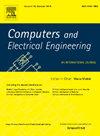MSPolypNet: A residual multi-scale semantic approach for polyps segmentation
IF 4.9
3区 计算机科学
Q1 COMPUTER SCIENCE, HARDWARE & ARCHITECTURE
引用次数: 0
Abstract
In colorectal cancer analysis, polyps segmentation is one of the crucial task where encoder–decoder style architecture plays a significant role as a base model. However, it suffers from the issue of loosing contextual and spatial information, which ultimately results poor performance. To address these issues, we introduce a residual multi-scale semantic polyp segmentation approach named MSPolypNet for efficient polyps segmentation. MSPolypNet improves contextual understanding and preserves spatial information by integrating innovative modules namely, residual multi-path atrous spatial pyramid pooling block (RMAB) and cross-spatial attention (CSA) enriched with dilated convolutions to capture intricate details across varying scales while maintaining computational efficiency. The proposed model was rigorously trained and tested on six independent datasets. Additionally, to assess cross-dataset performance, two separate datasets not used during training were exclusively utilized for testing. MSPolypNet achieved Dice Score and mIoU scores of 90.86% and 88.75% on the Kvasir-Seg and 94.92% and 90.56% on the CVC-ClinicDB, demonstrating MSPolypNet robustness and efficiency. Experimental results show a substantial improvement in segmentation accuracy, highlighting the potential of the proposed model to become a new benchmark for polyp segmentation. Its fewer parameters, compared to other models, provide an advantage for using our MSPolypNet in reliable -time clinical evaluations.
基于残差多尺度语义的息肉分割方法
在结直肠癌分析中,息肉分割是关键任务之一,其中编码器-解码器风格架构作为基础模型起着重要作用。然而,它存在丢失上下文和空间信息的问题,最终导致性能不佳。为了解决这些问题,我们引入了一种残差多尺度语义息肉分割方法MSPolypNet,以实现有效的息肉分割。MSPolypNet通过集成创新模块,即残差多路径属性空间金字塔池块(RMAB)和扩展卷积丰富的跨空间注意(CSA),提高了上下文理解和空间信息保存能力,从而在保持计算效率的同时捕获不同尺度的复杂细节。该模型在六个独立的数据集上进行了严格的训练和测试。此外,为了评估跨数据集的性能,在训练期间未使用的两个单独的数据集被专门用于测试。MSPolypNet在Kvasir-Seg上的Dice Score和mIoU得分分别为90.86%和88.75%,在CVC-ClinicDB上的Dice Score和mIoU得分分别为94.92%和90.56%,显示了MSPolypNet的鲁棒性和有效性。实验结果表明,该模型在分割精度上有了很大的提高,突出了该模型成为息肉分割新基准的潜力。与其他模型相比,其参数较少,为使用我们的mspolyypnet进行可靠的临床评估提供了优势。
本文章由计算机程序翻译,如有差异,请以英文原文为准。
求助全文
约1分钟内获得全文
求助全文
来源期刊

Computers & Electrical Engineering
工程技术-工程:电子与电气
CiteScore
9.20
自引率
7.00%
发文量
661
审稿时长
47 days
期刊介绍:
The impact of computers has nowhere been more revolutionary than in electrical engineering. The design, analysis, and operation of electrical and electronic systems are now dominated by computers, a transformation that has been motivated by the natural ease of interface between computers and electrical systems, and the promise of spectacular improvements in speed and efficiency.
Published since 1973, Computers & Electrical Engineering provides rapid publication of topical research into the integration of computer technology and computational techniques with electrical and electronic systems. The journal publishes papers featuring novel implementations of computers and computational techniques in areas like signal and image processing, high-performance computing, parallel processing, and communications. Special attention will be paid to papers describing innovative architectures, algorithms, and software tools.
 求助内容:
求助内容: 应助结果提醒方式:
应助结果提醒方式:


